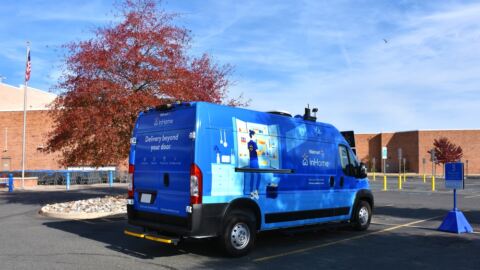Traditionally known as a publisher of travel guides, Lonely Planet actually boasts one of the earliest e-Commerce sites —one that has sold books online since 1994. But despite its deep roots in the web, Lonely Planet only recently adapted a mobile-responsive experience for its online shop, launching a completely redesigned e-Commerce site in February 2018.
In the first three weeks after unveiling the new site, Lonely Planet saw:
- Bounce rate decrease by 89%;
- A 195% increase in products added to cart; and
- A roughly 12% increase in site visitors compared with the three weeks prior to the site launch.
“Typically, we’ve had a pretty healthy add-to-cart rate,” said Mike Nelson, Global Director of E-Commerce at Lonely Planet. “But with the new shop, because of the ease of adding products to your cart, and the way we recommend other products on the product pages, we saw a dramatic increase there. Our cart values have increased, which has a domino effect on everything else in the business. That’s probably the biggest impact overall, but the mobile bounce rate did much better than we expected. We thought we’d get a boost somewhere between 50% and 60%, but we’re in the high-80s, which is awesome.”
Advertisement
Data-Driven Recommendations Power Site Experience
Overall, Lonely Planet is expecting a 10% lift overall sales lift in 2018, which would be consistent with 2017’s annual growth. The publisher used Workarea, an e-Commerce platform from WebLinc, to redesign and relaunch the site, while omnichannel consultancy firm FitForCommerce recommended best practices for site changes. The new site has given Lonely Planet a chance to better diversify its merchandising via a new product recommendation engine based on shopper behavior.
“We started this cool iteration process a few years ago, where we started expanding into coffee table books, kids’ books and food and recipe books,” Nelson said. “But our site was based around that one travel destination guidebook. Now, we can feature books in different categories that are associated with a destination. If you’re looking at Bangkok, Thailand, we can also serve up a Thai cooking book or a kids’ book related to discovering cultures in Southeast Asia, or a coffee table book that’s about beautiful beaches in the region or around the world.”
The publisher even gathers data from its online forums, so if more shoppers are talking about sub-Saharan Africa, for example, or the shopper spends additional time on the Mexico forum, the products on the site will reflect both the overall trends and the individual shopper’s history.
“It allows us to be more shoppable even though our web site is content-first,” Nelson said.
Mobile Site Needed To Match Success Of Mobile Apps
Considering Lonely Planet had managed to get such an early jump on building an e-Commerce site as well as in developing mobile apps for the Apple App Store, the publisher felt that its shop wasn’t up to par with the company’s innovative reputation. Lonely Planet offers two mobile travel guide apps: Guides — launched in 2016 — which serves as a resource before and during a trip, and Trips — launched in 2017 — which complements Guides with a way to share photos and videos with friends, family and fellow travelers.
These apps had been successful, and mobile users could go on Lonelyplanet.com and enter a mobile-responsive experience. However, upon clicking to the shop, they would discover that the site was no longer mobile-optimized. Nelson described this experience as “jarring” for consumers, especially if they had previously spent significant time looking at featured destinations and travel bookings.
“With the old experience, you had to pinch-and-zoom to buy an e-Book, which you essentially wanted to read on your phone anyway,” Nelson said. “This is a solution that allows shoppers to download digital books directly to their phone without trying to figure out how to do it. It’s seamless. Once you check out with an e-Book, the next page is a download screen and then it downloads straight to your iPhone, where you can save it to iBooks or Kindle or whatever you want to use it with.
“That’s one key benefit, but we know that travelers around the world aren’t going to be around their desktop,” Nelson added. “We get people who are in Tasmania or Sri Lanka or India who are chatting us through our mobile site despite poor Internet reception, and want to buy this book and have it delivered to their hotel.”














